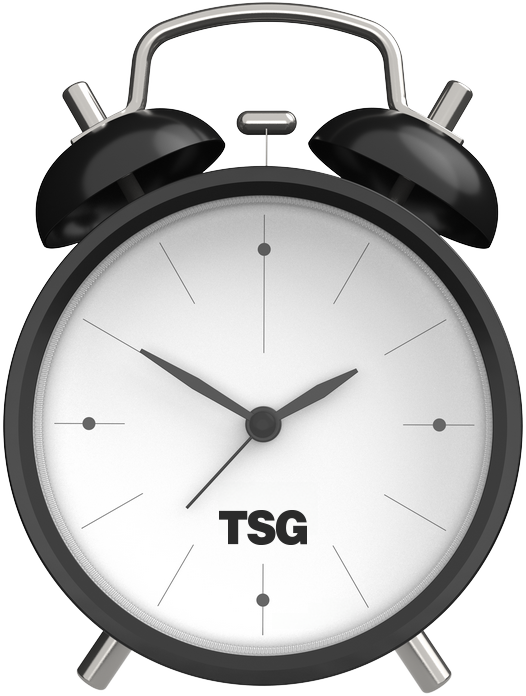In a fast-paced world, you need a reliable system to stay on top of tasks. To set your daily priorities effectively, start by identifying your Most Important Tasks (MITs) that align with your goals. Use the Eisenhower Box to distinguish between urgent and important tasks, and incorporate time blocking to structure your day efficiently.
Tackle your biggest challenges first to maximize morning productivity. Leverage technology like Trello or Asana for better task management. Review your priorities regularly, and remember to include self-care to maintain long-term productivity.
These seven powerful strategies help you manage the most important things in your priority list, bringing clarity and focus to your daily routine.
Strategies to Maximize Your Focus
To help you stay focused, work smarter, and make the most of each day, here are seven powerful strategies you can apply, starting with identifying your top priorities.
1. Determine Your Most Important Tasks (MITs)
Determine your most important tasks (MITs) to manage your day effectively. Prioritize these three essential tasks daily to enhance your productivity and maintain focus.
Choose no more than three MITs—a manageable number—that reflect your biggest goals and commitments. Your daily lists should focus on results, not doing everything. For example, if you have tasks tied to external clients, those may need top priority.
Consider:
- Deadlines
- Long-term value
- Collaboration dependencies
This method helps you tackle high-impact tasks first, markedly reducing stress and boosting your confidence in handling priorities.
2. Use the Eisenhower Box for Task Prioritization
After identifying your Most Important Tasks, the next step in mastering daily productivity is to utilize the Eisenhower Box for task prioritization. This method helps you categorize tasks into four quadrants based on urgency and importance. Here’s how you can apply it:
| Urgency | Importance | Action |
| Urgent & Important | ✅ High | Do it now |
| Not Urgent & Important | ✅ High | Schedule it |
| Urgent & Not Important | ❌ Low | Delegate it |
| Not Urgent & Not Important | ❌ Low | Eliminate it |
The matrix helps organize and control your workload. Review your Eisenhower Box regularly to ensure your efforts align with your goals and adjust your prioritization as necessary. This dynamic approach enhances your time management and overall productivity.
Implement Time Blocking to Structure Your Day

While using the Eisenhower Box helps prioritize tasks, implementing time blocking can further structure your day for maximum efficiency. Time blocking involves setting specific intervals for focused work, boosting your ability to manage daily schedules effectively, and dedicating time slots to high-priority items on your task list. Ensure uninterrupted focus for your top-priority goals.
This method helps eliminate distractions and incorporates necessary breaks to maintain energy and reduce stress. Regularly evaluating and tweaking your time blocks based on performance lets you refine your approach, leading to better time management. Embrace time blocking to focus sharper, work smarter, and align your day’s activities with your top priorities.
4. Tackle Your Biggest Challenges First
If you tackle your biggest challenges first thing in the morning, you’ll clear the most formidable tasks off your plate and kickstart your day with a major win. Prioritizing these daily tasks enhances time management by reducing procrastination triggered by fear or overwhelm. It’s a solid strategy for boosting productivity and focus throughout your day.
- Boost Motivation: Completing a significant challenge early produces a high that powers you through less daunting tasks.
- Enhance Focus: With your main task first, you experience less decision fatigue, keeping your mind sharp for other responsibilities.
- Increase Personal Success: Regularly tackling challenges builds resilience and problem-solving skills, setting the stage for continual growth and achievement.
5. Utilize Technology and Tools for Efficiency

Having tackled your most challenging tasks early, you can now leverage modern technology to streamline the rest of your day’s priorities.
- Trello, Asana, ClickUp – manage projects and collaborate with teams.
- Google Calendar – for time blocking
- Zapier, IFTTT – to automate repetitive actions
- Focus@Will, Forest – to enhance concentration
6. Regularly Review and Adjust Your Task List
Reviewing tasks is a crucial part of the productivity process. This practice isn’t just about ticking off completed tasks; it’s a strategic approach to enhance productivity. Set aside 5–10 minutes at the end of each day for a task audit to improve tomorrow’s efficiency. By reviewing, you can identify and eliminate what’s no longer relevant, guaranteeing your focus remains on vital tasks. Adjustments allow you to prioritize critical tasks and seamlessly integrate new ones, maintaining alignment with your long-term goals.
- Identify Irrelevancies: Remove outdated tasks to streamline your focus.
- Prioritize Urgency: Adjust daily to highlight urgent responsibilities.
- Assess Productivity Patterns: Utilize tools like the Eisenhower Matrix to optimize task management and promote flexibility.
This method guarantees you’re not just busy, but effective in your endeavors.
7. Emphasize Self-Care to Sustain Productivity

While adjusting your task list enhances efficiency, emphasizing self-care is equally fundamental to sustaining long-term productivity. Prioritizing self-care activities, like regular exercise, can boost your cognitive function and overall productivity by up to 20%. Don’t underestimate the power of regular breaks; adopting techniques like the Pomodoro method allows your brain to recharge, sharpening focus and enhancing work output.
Incorporating mindfulness practices, such as meditation, can reduce stress by 30%, maintaining clarity and focus on your daily priorities. Make time for friends and family—they’re part of a healthy life. Additionally, establishing a consistent sleep routine is essential; it enhances mental acuity and boosts problem-solving skills by 20%. Remember, setting aside time for hobbies and relaxation isn’t just enjoyable—it’s crucial, potentially improving your mental clarity, work-life balance, and focus boosting habits by 35%. Self-care keeps your energy at peak level.
Frequently Asked Questions
How Do You Set Daily Priorities?
You start by choosing a consistent time each day to establish what’s essential. Pick three high-impact tasks, categorize them using the Eisenhower Matrix, and adjust based on daily progress. Use the Eisenhower Matrix to sort these tasks by urgency and importance. Keep your daily focus narrow, limiting yourself to three priorities to prevent feeling overwhelmed. Always be ready to adjust these priorities based on new developments or completed tasks to stay aligned with your broader goals.
What Are the Three D’s of Prioritizing?
You might’ve heard about the Three D’s of prioritizing: Do, Delegate, and Ditch. These help you manage your tasks effectively. “Do” tasks are urgent and important, needing your immediate attention. You can pass ” Delegate ” tasks to others, freeing up your valuable time. Finally, “Ditch” tasks don’t align with your goals and can be cut from your list to streamline your focus.
What Are the 5 P’s of Time Management?
You’re managing your time with the 5 P’s: Purpose, Priorities, Planning, Performance, and Perseverance. Start by defining your goals (Purpose), then rank tasks by urgency and importance (Priorities). Plan your day around these tasks, preparing for interruptions (Planning). Execute your plan, monitor progress, and adjust as needed (Performance). Finally, keep pushing towards your goals, despite setbacks (Perseverance). These steps will help streamline your daily activities and enhance productivity.
What Is the ABC Method of Prioritizing?
The ABC method of prioritizing helps you categorize tasks by importance.
Label tasks:
- A = Must-do
- B = Should-do
- C = Nice-to-do
This method clarifies focus and avoids decision paralysis.
By consistently applying the ABC method, you will become more adept at identifying which tasks have the greatest impact on your objectives. This approach is one of the best methods for prioritizing goals, allowing you to allocate your time and resources wisely. As you get into the habit of using this framework, you’ll find that your clarity increases, ultimately leading to a more organized workflow and greater satisfaction with your accomplishments.
Conclusion
Now that you’ve got the tips, it’s time to implement them. Start each morning by identifying MITs, using the Eisenhower Box, blocking time, and tackling your toughest tasks first. Combine this with tech tools, routine reviews, and self-care, and your productivity will soar. Block out time for these tasks, tackling the big challenges first. Don’t forget to leverage tech tools to stay on track. Regularly update your task list and always carve out time for self-care. By doing so, you’ll boost your productivity and keep your priorities aligned effectively.




















